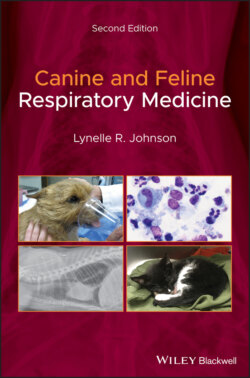Читать книгу Canine and Feline Respiratory Medicine - Lynelle Johnson R., Lynelle R. Johnson - Страница 10
Preface
ОглавлениеStudents and practicing veterinarians are often challenged by patients with respiratory disease because the clinical signs are so similar among different disease processes within and beyond the respiratory system. Animals with cardiac and systemic diseases often present with respiratory signs, which means that all cases require thought and introspection on appropriate localization of disease as well as the underlying pathophysiology. The most critical piece of the puzzle is a comprehensive respiratory and systemic examination, and this book has been designed to provide easily understood pathways to the diagnosis. It is my hope that this contribution to the veterinary literature conveys highly specific details on respiratory examination, diagnostics, and diseases in a clinically relevant, logical, and easy‐to‐read fashion. This extensively updated edition includes new knowledge that has been generated on respiratory diagnostic testing and diseases such as Norwich terrier upper airway syndrome and epiglottic retroversion.
My goal with this text was to integrate relevant anatomy, physiology, and pathophysiology in a rational and readable manner that is immediately clinically applicable for the busy practitioner and inquiring student. I approached this task recognizing that the major comprehensive textbooks in veterinary medicine contain excellent chapters on respiratory disorders. My book aims to provide an authoritative, cohesive, and complete discussion in a user‐friendly, single‐author volume. The first section deals with the common presenting signs demonstrated by patients with respiratory disease (nasal discharge, loud breathing, cough, tachypnea, and exercise intolerance) as well as a new section on differentiating cardiac from respiratory disease. The next section contains detailed how‐to descriptions of the most important diagnostic methods. I then devote an extensive chapter to therapeutic options, with special reference to new guidelines for management of infectious respiratory diseases. The remainder of the book has thorough explanations of individual diseases, divided into chapters dealing with disorders of the nose, airways, lung parenchyma, pleura, and pulmonary vasculature. Each chapter follows the same easy‐to‐read order, with diseases subdivided by etiology into structural, infectious, inflammatory, and neoplastic disorders.
I hope that this second edition of my textbook will instill confidence in students and practitioners as they identify and manage respiratory conditions of dogs and cats.
